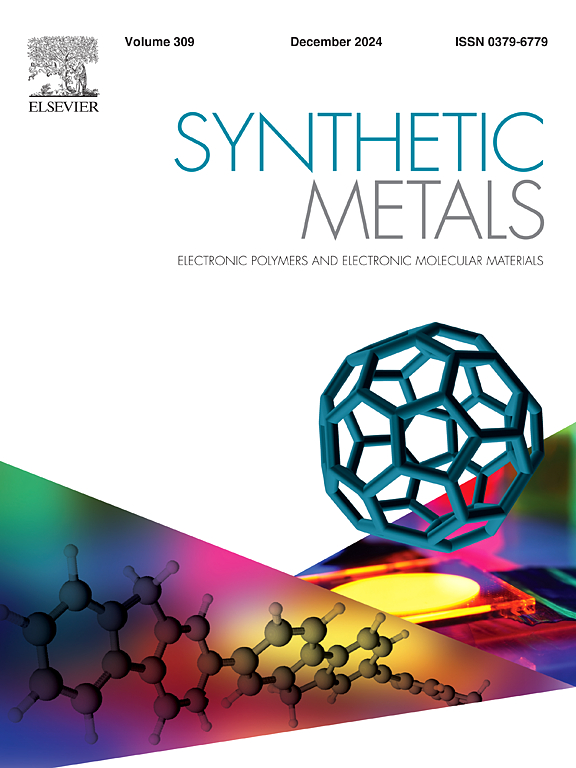Self-repairing tin-based perovskite solar cells using 2,4-dichlorophenylhydrazine hydrochloride as dopant
IF 4.6
3区 材料科学
Q2 MATERIALS SCIENCE, MULTIDISCIPLINARY
引用次数: 0
Abstract
Low efficiency and poor stability are considered as the dominant factors that hinder the further development of tin-based perovskite solar cells due to the easy oxidation of the divalent tin ions (Sn2+). Aiming at solving the issues, 2,4-dichlorophenylhydrazine hydrochloride (DPHH) is doped into the FASnI3 perovskite film to inhibit the oxidation of Sn2+ to the tetravalent tin ions (Sn4+). The molecular structure of DPHH contains reductive hydrazine group and hydrophobic phenyl group, which can effectively protect the ions of Sn2+, prevent the further degradation of FASnI3 film. Further analysis of the surface morphology and crystal structure reveal that DPHH can effectively improve the crystallinity and grain size of the FASnI3 perovskite film, which is beneficial for increasing the resistance of charge recombination. More importantly, the devices exhibit superior self-repairing property in device lifetime testing. It’s confirmed that the phenylhydrazine ion (Ph+) in DHPP can partially reduce Sn4+ formed by oxidation to Sn2+, so as to partially repair the defects of the film and enhance the performance. Therefore, the modified devices exhibit enhanced device performance, including enhanced power conversion efficiency as well as longer liftetime.
以2,4-二氯苯肼盐酸盐为掺杂剂的自修复锡基钙钛矿太阳能电池
由于二价锡离子(Sn2+)易氧化,效率低、稳定性差是阻碍锡基钙钛矿太阳能电池进一步发展的主要因素。针对这一问题,将2,4-二氯苯肼(DPHH)掺杂到FASnI3钙钛矿膜中,抑制Sn2+氧化为四价锡离子(Sn4+)。DPHH的分子结构中含有还原性肼基团和疏水性苯基,能有效保护Sn2+离子,防止FASnI3膜的进一步降解。进一步的表面形貌和晶体结构分析表明,DPHH能有效改善FASnI3钙钛矿膜的结晶度和晶粒尺寸,有利于提高电荷复合电阻。更重要的是,在器件寿命测试中,器件表现出优异的自修复性能。证实了DHPP中的苯肼离子(Ph+)可以将氧化形成的Sn4+部分还原为Sn2+,从而部分修复薄膜缺陷,提高性能。因此,改进后的器件表现出增强的器件性能,包括增强的功率转换效率以及更长的寿命。
本文章由计算机程序翻译,如有差异,请以英文原文为准。
求助全文
约1分钟内获得全文
求助全文
来源期刊

Synthetic Metals
工程技术-材料科学:综合
CiteScore
8.30
自引率
4.50%
发文量
189
审稿时长
33 days
期刊介绍:
This journal is an international medium for the rapid publication of original research papers, short communications and subject reviews dealing with research on and applications of electronic polymers and electronic molecular materials including novel carbon architectures. These functional materials have the properties of metals, semiconductors or magnets and are distinguishable from elemental and alloy/binary metals, semiconductors and magnets.
 求助内容:
求助内容: 应助结果提醒方式:
应助结果提醒方式:


